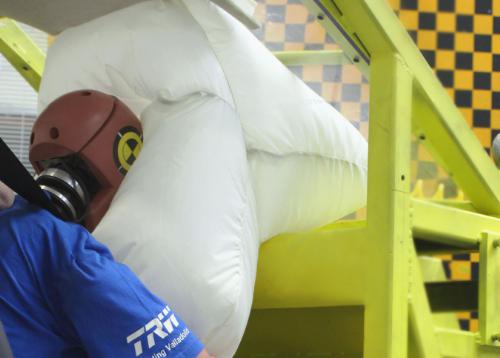TRW Automotive has recently started production of its roof airbag technology on the Citroen C4 Cactus. The new ‘bag in roof’ replaces passenger airbags typically mounted in the instrument panel and can allow for improved interior design aesthetics, ergonomics and functionality while saving space in the instrument panel.
Dirk Schultz, engineering director for TRW’s Inflatable Restraint Systems commented: “Interior design requirements have evolved significantly over the last decade with some manufacturers looking for more instrument panel space for the latest multimedia technologies or a means of increasing storage, or are proposing more open and airy cockpit environments.”
“TRW’s new roof airbag system is a unique development and provides enhanced styling flexibility for future vehicle interior requirements in combination with excellent restraint performance.”
The airbag unit comprises a cushion, a gas diffusion channel and a gas generator within a housing which is fixed onto (or beneath) the headlining above the windscreen. Upon deployment, the bag unfolds along the windscreen in front of the seat occupant, rather than towards them, helping to restrain front seat passengers of varying shapes and sizes.
The product provides opportunities for standardization as some of the components are common to all TRW airbag applications.
The roof airbag’s new design concept also helps to enhance development efficiency – by eliminating the need to package a passenger airbag in the instrument panel, it can significantly reduce the development costs of the dashboard as there is no need to design and test a specific ‘door’ that opens with the airbag deployment. It is also functionally compatible with a wide range of vehicle architectures.
Thierry Metais, TRW global account director for PSA added: “We are proud to launch our roof airbag for the first time on this modern, striking new vehicle which marks a new era for the French brand. Our technology has helped to deliver a de-cluttered, more relaxing cabin environment while supporting restraint performance across the range of occupants.”
Source: TRW
Romain’s opinion:
Having the airbag coming from the top might be complicated to adjust from a kinematics point of view. While the head is going from up to down, an airbag in the instrument panel is, according to me, more adapted to follow the head trajectory. How do you think TRW adapted the airbag deployment to the head trajectory? How did they make it work and approved?




















